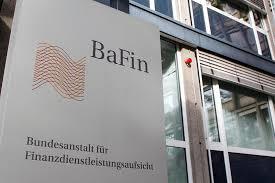The rapid growth in international investment, and huge swings in the Japanese yen and US dollar, have forced recognition that the currency exposure must be addressed.
There are two components of international in-vestment: the local market return and the translation of these local returns back into the fund's base currency.
When capital is invested in assets, such as equities or bonds, there is expected return. In contrast, no capital is invested to purchase currency exposure, and so no 'return premium' can be expected. In our view, currency is not an asset, but an exposure. Consequently, funds with international investments face significant - and largely unrewarded - foreign currency risk.
If currency movements were small or averaged out over time, then currency overlay would not be needed. In fact, very large cumulative currency movements do occur in short time periods. For a European fund investing in non-European equity markets, on average over a 12 month period, over 40% of the total return (whether positive of negative) will be caused by currency moves. Currency overlay managers are appointed to manage this, currently unmanaged, risk.
There are two very different philosophies of currency management. One is to focus on risk control. The second is to try to time currency movements using forecast indicators. The differences between philosophies lies in objectives, beliefs and payoffs. The choice of philosophy depends on the goals of each particular fund.
The first objective of risk-controlled overlay is to avoid currency loss versus the benchmark. The second goal is to get currency returns, if indeed there are any currency returns available. In contrast, with forecast based ap-proaches, the first objective is to forecast return in order to achieve return. The second is to control risk of loss.
There are three sources of forecasting information: fundamentals, technicals and market judgment. Fundamentals do not change much from one quarter to the next. Hence, from the early 1980s onward no currency manager has employed a pure fundamental style.
Technical approaches process historic currency prices to try to identify trends and overbought/ oversold situations. Most fundamental managers incorporate some technical information in their process. Many forecast based approaches also incorporate judgment. This can make it difficult to evaluate performance, given the extent of senior personnel movement between firms.
There are three different approaches to risk controlled overlay. There is our own approach at Pareto of currency risk modeling. There is also dynamic hedging and there is the use of put options. The most common form of dynamic hedging is known as synthetic option replication (it is essentially portfolio insurance applied to currencies). In dynamic hedging, as the currency rises, the currency is purchased. As the currency falls, the currency is sold. Put options can be very effective in controlling risk, but this protection can often come at a very high cost.
The currency market is the most liquid financial market in the world: the Bank for International Settlements survey showed turnover of US$1.2trn per day. Eight currencies account for US$1trn turnover per day. For all North American stock markets, the turnover - through the entire year - was US$5.7trn.
The fundamental and technical in-formation is freely available. So the currency market fulfills all the conditionsto be an efficient market. Hence, it should not be possible to forecast currency moves.
The most famous paper on currency forecasting is by Professors Meese and Rogoff (1983). This found that, even knowing future fundamental variables, it was impossible to forecast future exchange rates. This created enormous controversy. In the ensuing 14 years many have attempted to find a currency model that outperforms tossing a coin. Some of the latest research by Professors Mark and Choi at Ohio State University (1997 forthcoming) has been able to beat the Random Walk, but only beyond a two year period.
Over half the currency overlay managers use forecasting approaches. However, their models are not in the public domain. My own belief is that fundamental data can be of value in indicating the sign of possible currency movements. However, such information is not consistent, and has very little size information.
For this reason we use risk based currency overlay. There is unambiguous academic proof that currency risk can be forecast in the short run.
A real difference between philosophies is in return payoffs. The diagrams below show prototypical payoff patterns for successful, and unsuccessful, application of the forecast and risk control overlay styles.
In the short run (under one year) the highest performing currency manager will almost always be a forecast style. However, the lowest performing manager will also have a forecast style.
Chart one shows the currency translation swings for a US dollar based fund in 1994. The US dollar fell as the foreign currencies rose. The solid line shows the currency return (this does not include the underlying equity returns). When foreign currency rises, any hedging reduces the foreign currency gains. The dashed line indicates the fund's experience. At end 1994, the fund had a 10.2% translation gain, but a 2.9% overlay loss. The double entry result was a net gain of 7%.
During the same year, the situation was reversed for a deutschemark based fund (chart two): Their overseas in-vestment fell in value by 8.2% (as the US dollar declined against the DM). When foreign currencies fall, currency overlay is able to provide incremental return. In this period, there was an ov-erlay gain of 4%. Hence, the net currency return was -2.3%.
The currency overlay manager operates independently from the underlying international equity (or bond) managers. The currency overlay manager only needs to know the currency allocation of the underlying funds. This information is usually obtained monthly from the custodian, or the pension fund, or directly from the fund managers. Currency managers generally hedge using currency forwards (some also employ currency options). Thus acting as agent, the manager may instruct a bank to sell yen versus the fund's base currency and can be used to reduce the fund's exposure to a fall in yen. This is a forward foreign exchange contract. There is no exchange of monies at the inception ofthe contract. On the final maturity of the forward foreign ex-change contract, there will be either a profit (cash coming to the fund) if the foreign currencies fall, or there will be a loss (cash sent from the fund to the bank) if the currency rises.
Currency overlay is needed when the overseas exposure is significant - or will become significant. Currency swings then have a material impact on the total fund return.
There are three points to remember as you consider currency overlay: currency returns are both concentrated and episodic; over the longer term (three to five years) average value added of some 1% to 2% per annum has been achieved with tight risk control; and that currency overlay substantially reduces currency risk. As a result the international allocation can be built with less risk. This is particularly important for Continental European funds, who are planning to rapidly expand non-Continental investments.
Ronald Layard-Liesching is director of research at Pareto Partners in London





























No comments yet